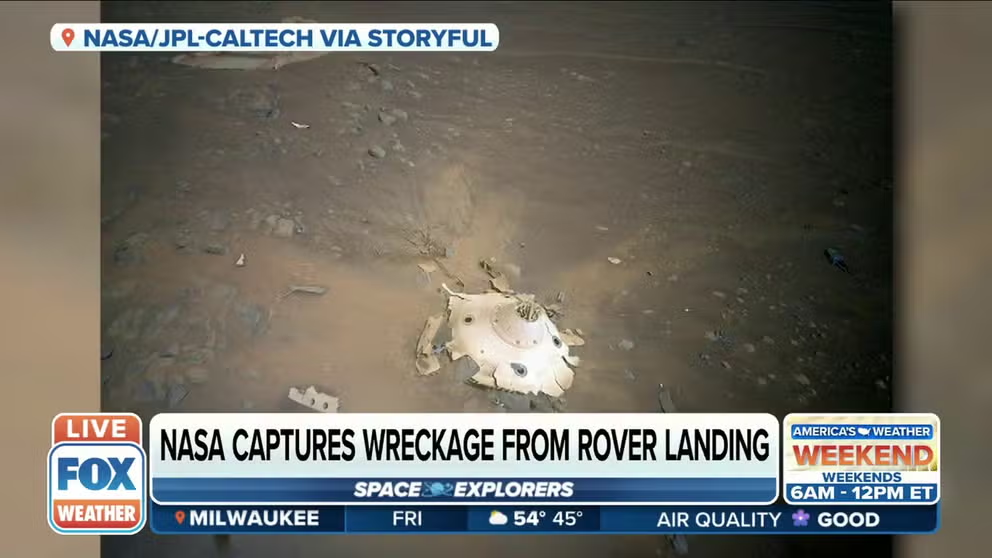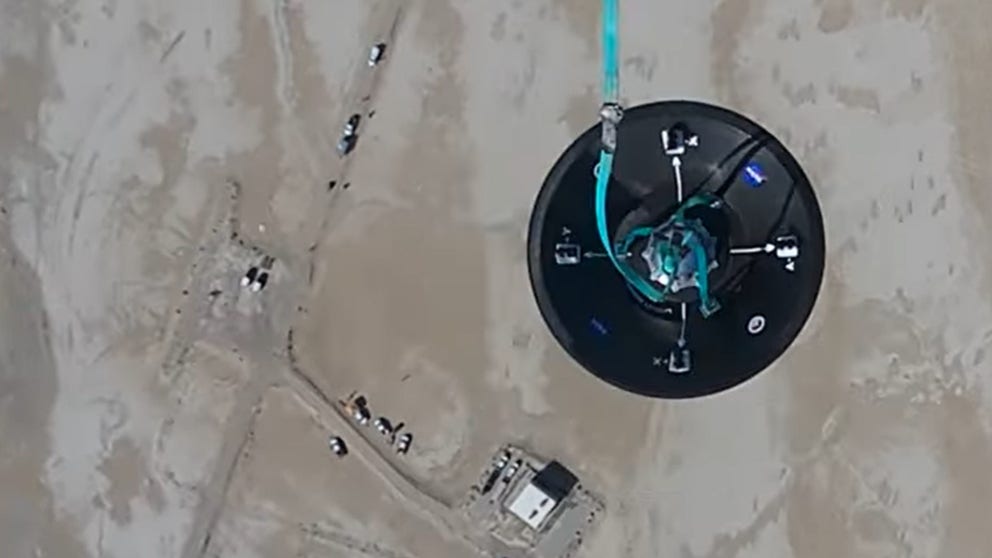New Mars sample return game plan gives NASA's rover a promotion, adds 2 helicopters as backup
NASA, ESA simplified the Mars samples return mission, removing another rover and lander and adding two tiny helicopters
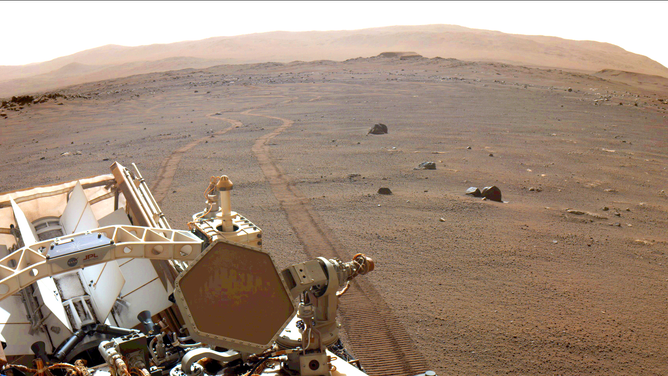
NASA’s Perseverance Mars rover looks back at its wheel tracks on March 17, 2022, the 381st Martian day, or sol, of the mission. (Image: NASA/JPL-Caltech)
To bring the first samples from Mars back to Earth, NASA and the European Space Agency have an elaborate plan involving a fleet of robots, including the Perseverance rover, a new Martian lander, a sample-catching spacecraft and now, two tiny helicopters.
The two space agencies revealed Wednesday they have simplified the original Mars sample return campaign mission, removing a sample fetch rover and its associated lander. NASA and ESA managers said they changed the plan because of the expected longevity of NASA's newest rover, Perseverance, and the Ingenuity helicopter's success, which has now completed 29 flights on Mars.
NASA Science Mission Directorate Associate Administrator Thomas Zurbuchen said the plan was always to have two methods of getting the samples back to Earth, using Perseverance or another rover for the handoff.
WITNESSING DUST DEVILS: NASA’S ROVER BRINGS NEW MEANING TO MARTIAN DUST STORMS
"If you look at the overall risk of getting those samples back, you cannot be entirely relying on Perseverance. That's frankly far from realistic or reasonable," Zurbuchen said. "And also to bring another rover there with its own lander. The likelihood of that, certainly, as we know, landing on Mars is hard. It's not a hundred percent either."
Instead of an additional rover, the plan is to use two tiny helicopters as the backup option and Percy as the primary.
Mars helicopter captures images of debris from Perseverance rover's landing gear
Mars helicopter captures images of debris from Perseverance rover's landing gear.
Perseverance has been exploring the Jezero Crater, Mars's ancient river delta, since it landed in February 2021, searching for signs of life, taking rock core samples and scouting potential sample return landing sites.
Ingenuity, the 4-pound helicopter that hitched a ride with Percy to Mars, was initially a technology demonstration mission to learn if controlled flights on Mars would even be possible. The Ingenuity helicopter exceeded expectations beyond its 30-day demonstration mission and is now in a new operational phase, surveying Mars from above.
NASA'S MARS HELICOPTER CONTINUES TO DEFY EXPECTATIONS
To take advantage of the flight success on Mars, NASA leaders said a new lander launching in 2028 will now have two sample recovery helicopters based on the Ingenuity design. The lander will have a Mars Ascent Vehicle that will launch the samples from Mars into orbit, where ESA's Earth Return Orbiter will be waiting to catch the samples and transport them back to Earth.
"At this moment in time, based on the knowledge we have (from) an in-depth analysis from Curiosity and also what we've learned from Perseverance, we are a lot more comfortable to make Perseverance the primary place, the primary option, of getting the samples there," Zurbuchen said. "That is because of things we learned on Mars."
While Percy landed over a year ago on Mars, its predecessor NASA's Mars Curiosity Rover, has continued to operate on the Red Planet for 10 years, giving engineers the confidence that Percy will have the longevity needed to complete its job.
THE BUSINESS OF SPACE DIRT: ARTIFICIAL LUNAR, MARTIAN AND ASTEROID SOIL IS IN DEMAND
Perseverance has been collecting duplicate samples in Jezero Crater. It will leave a deposit sample cache in the river delta as an "insurance policy" collection option before moving on to more ancient terrain on Mars, according to NASA's Mars Sample Return Program Manager Richard Cook. It's possible the deposited samples could be collected by future missions.
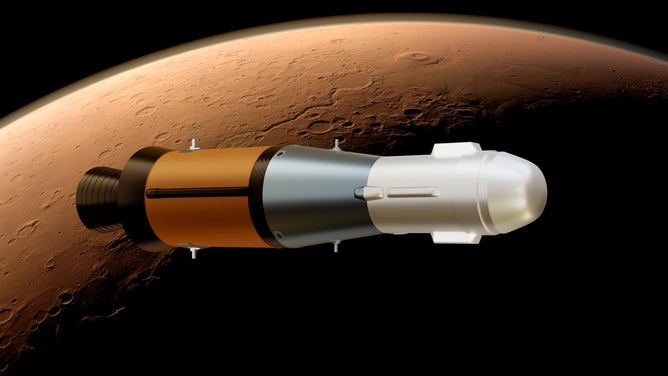
This illustration shows NASA’s Mars Ascent Vehicle (MAV), which will carry tubes containing Martian rock and soil samples into orbit around Mars, where ESA’s Earth Return Orbiter spacecraft will enclose them in a highly secure containment capsule and deliver them to Earth. (Image: NASA)
The rover is the primary means to get the samples to the Sample Retrieval Lander, which will carry the Mars Ascent Vehicle and ESA's robotic transfer arm.
ESA Director of Human and Robotic Exploration David Parker explained a robotic arm would have also been on the fetch rover, but that's no longer needed. The arm on the lander will now pluck the samples from Percy and place them in the Mars Ascent Vehicle.
ONE YEAR LATER: NO LIFE FOUND YET, BUT PERSEVERANCE HAS RACKED UP ACCOMPLISHMENTS
Mars sample return project tested in Utah
Engineers successfully completed a series of Mars Sample Return drops in Utah.
"It's a multi-jointed, very sophisticated robotic arm with end effectors, designed to pick up the sample tubes on the carousel on Perseverance," Parker said. "And now, as you've understood, the possibility to pick up sample tubes deposited on the surface by one or other of these two gripper helicopters."
The helicopters will be a backup to help with the sample transfer if needed.
"Our overall approach in adding the helicopters … was to provide a backup capability to what is the prime path of Perseverance, which we have a lot of confidence, given that it's been operating successfully," Cook said.
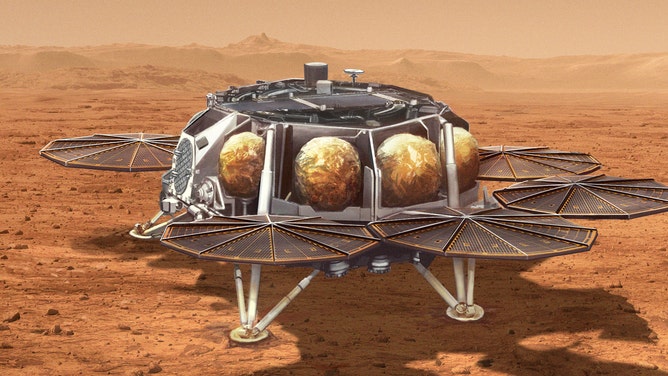
This illustration shows a concept for a proposed NASA Sample Retrieval Lander that would carry a small rocket (about 10 feet, or 3 meters, tall) called the Mars Ascent Vehicle to the Martian surface. After being loaded with sealed tubes containing samples of Martian rocks and soil collected by NASA's Perseverance rover, the rocket would launch into Mars orbit. (Image: NASA)
When asked what the adjustments would mean for the overall cost of the sample return, NASA officials said it would be less than the original plan estimated to cost $7 billion but would not speculate on a final total.
"Obviously, one lander is much less expensive than two. We're still in our preliminary design phase," NASA Mars Sample Return Program Director Jeff Gramling said.
If all the robots work as planned for the planetary handoff, the samples could land on Earth in 2033.
